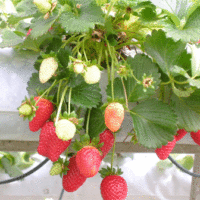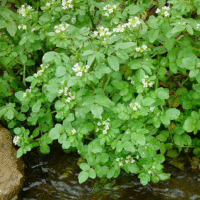| Botanical name | Lycopersicon esculentum |
|---|---|
| Plant Care |  Deciduous Deciduous – Sheds Its Leaves Annually  Full Sun Full Sun – Prefers 6 or more hours of sun per day. Frost Hardy Frost Hardy – Can Handle frost without damage.  Moderate Watering Moderate Watering – Requires Regular Watering.  Pruning Required Pruning Required – Needs to be Pruned.  Non Indigenous Non Indigenous – Exotic to South Africa. |
| Size | |
| Categories | |
| Common name(s) | Tomatoes |
| Origin | |
| Planting instructions | Plant seedlings in open beds when they are 100–120mm tall. Seedlings of tall- growing hybrids can be planted 500mm apart in the row. |
| Maintenance | Use a single stake to support each plant or enclose it in a wigwam of three or four stakes tied at the top. Grow cocktail tomatoes on a trellis, tying the plants on regularly to prevent them sprawling. Water frequently and feed every 14 days with liquid fertilizer high in potassium and low in nitrogen. |
| Fruit | Pick ripe fruits regularly to encourage plants to continue bearing. |
| Uses | Culinary – Tomatoes are used for salads, soups, stews and go well on breads. |
| Interesting planting ideas | Tomatoes grow well with onions, chives, parsley, basil, sage, marigolds, celery and carrots. |
| Interesting info | Tomato is high beta carotene, calcium, magnesium, phosphorus, folic acid, vitamins A and C, which helps to settle anxiety, fatigue and tension. |
| Common pests and diseases | Aphids, white fly, caterpillars, red spider mite, nematodes. Blight, leaf spot.Extreme weather conditions or imbalances in soil nutrients and soil moisture can cause physiological or non-parasitic diseases such as sun scald, leaf roll, cat face (malformed fruits), blossom-end rot (blossom end starts to develop a large black rotting patch), and flower drop. |
| Recommended varieties | Recently introduced hybrids provide a heavier yield, improved flavour, and better disease resistance. A determinate grower will grow to a height of about 1m and usually does not need to be staked. ‘Flora Dade’ is a determinate grower, yielding medium-large, firm fruits. An indeterminate grower needs a tall stake and will continue growing until halted by the removal of the growth point. ‘Zest’, an indeterminate grower, has a long bearing period with excellent quality fruit; ‘Josefina’, a cocktail hybrid, is another indeterminate grower. Cherry tomatoes are a good choice for a smaller garden, as they produce abundant fruits, in a variety of shapes and colours, over a long period of time. |
| Harvest | Pick ripe fruits regularly to encourage plants to continue bearing. |
| Yield | Twelve to fifteen plants should yield enough for a family of four. |
| Seed sowing instructions | Sow seed in beds or seed trays. Prick out seed sown in trays when the first true leaves are well developed. |
Lycopersicon esculentum (Tomatoes)
- Botanical name: Lycopersicon esculentum
- Common name(s): Tomatoes
- Categories: Fruits and Vegetables
Plant description:
The tomato is the most popular and versatile vegetable grown worldwide. It is a warm-season crop that needs about a three-month growing season to reach fruit-producing stage.
Family: Solanaceae
Botanical Pronunciation: lye-koe-PUR-sih-kon ess-kew-LEN-tum
Lycopersicon esculentum requirements and features
info on these icons
Moderate Maintenance
Requires moderate maintenance.
Prohibited Use Notice: No Data Scraping Allowed Except for Search Engine Indexing:
The content provided on PlantInfo.co.za is intended for personal, non-commercial use only. Unauthorized extraction, reproduction, or use of the data, including scraping, for any purpose other than search engine indexing is strictly prohibited. Violations of these terms may result in legal action. By accessing and using this website, you agree to comply with these conditions and acknowledge the legal restrictions on the use of our content.
![]()
![]()





















